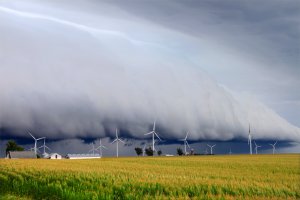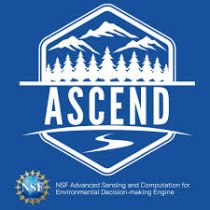Using long-term data sets to trace the impacts of environmental policy
March 28, 2012
Just before I became a staff scientist at NEON, I and colleagues from the University of Colorado, Environmental Protection Agency, and University of Maine took a new a look at some long-term data to help answer a question that has been perplexing scientists for several decades: Why is the amount of dissolved organic matter (the stuff that gives water that brownish-yellowish tint) increasing in lakes and streams of the northeastern United States and Europe? Our study contributed to growing evidence suggesting that it’s a symptom of recovery from acid rain. It also highlighted the ability of environmental policy to impact ecosystem function and the importance of long-term monitoring initiatives, like NEON, to help society ensure basic ecosystem services like clean air and water. Dissolved organic matter (DOM) forms from decomposing plants or from microbe secretions. It's a hodgepodge of carbon-containing compounds that's present in all natural waters and plays a critical role in many important processes within the environment, including serving as a microbial food source, maintaining the pH of aquatic ecosystems, and binding trace metals and pollutants. Changes in DOM have the potential to profoundly affect ecosystem function across large areas of the landscape. Scientists have proposed numerous causes for increasing DOM including rising atmospheric CO2 concentrations, climate warming, nitrogen deposition, and changing hydrology. However, several recent studies have concluded that increasing DOM is linked to changes in soil chemistry resulting from a decrease in acid precipitation facilitated by the Clean Air Act and Clean Air Act Amendments of 1990, the legislation that defines the Environmental Protection Agency’s responsibilities for protecting and improving our nation’s air quality. My colleagues and I tested the hypothesis that increasing DOM is a sign of ecosystems recovering from acid precipitation. To do so, we used long-term lake and atmospheric chemical records and applied a new method, fluorescence spectroscopy, to re-analyze archived water samples collected from a series of lakes in Maine (mapped below) between 1993 and 2009.
View Maine Lakes from DOM/acid sensitivity study in a larger map
Fluorescence spectroscopy works by shining light through a water sample to collect data about the wavelength and intensity of the light emitted after passing through the water. This information can be used to determine the chemical composition and characteristics of DOM within the sample. We used data from the National Atmospheric Deposition Program and the EPA’s New England Long Term Monitoring Program to look for regional trends in acid deposition. The data revealed that sulfate deposition (a major contributor to acid precipitation) declined significantly across the region of this study between 1980 and 2010 (below), while DOM increased in the majority of lakes over the same time period.
After establishing that DOM increased while sulfate decreased, we were ready to re-analyze the archived samples we had obtained. Analyzing the samples using fluorescence spectroscopy and a measure called the Fluorescence Index (FI) allowed us to discern whether the DOM in archived samples was derived from terrestrial (think of leaves decomposing on the ground) or microbial (leached or secreted from microbes) sources. Detecting changes in the source of DOM was critical to understanding if declining sulfate and acid rain are responsible for increasing DOM concentrations. Soil organic matter dissolves better under less acidic conditions; meaning that as these ecosystems recover from acid rain, terrestrial DOM production may increase. Eventually, this terrestrial DOM may make its way into streams and lakes resulting in a shift of the DOM signature to a more terrestrial FI. Terrestrial DOM has a lower FI than microbial DOM. So, if decreased acid precipitation is leading to greater terrestrial DOM production, which is in turn being transported to surface waters, then archived lake samples would demonstrate a declining FI (i.e. more terrestrial) over time, right (see conceptual figure here)? And that’s exactly what we found. The conclusions of our research support the hypothesis that increasing DOM in these lakes is the result of a decline in acid rain and subsequent ecosystem recovery due to the Clean Air Act. More importantly, these changes in DOM illustrate that the policy decisions we make, or don’t make, have the ability to alter atmospheric chemistry and the concentration of pollutants and impact ecosystem function. This work also illustrates the importance of publicly funded long-term monitoring initiatives in providing data to inform current and future policy decisions. NEON will provide researchers and the public with data sets capable of answering similar questions but with many more variables, over longer time-scales and much greater geographic areas. An unprecedented, continental scale observatory like NEON will provide future researchers and the general public a framework for understanding changes in parameters ranging from atmospheric, aquatic and terrestrial chemistry to the spread of infectious disease. Furthermore, the thousands of data streams NEON plans to collect will allow us to forecast important ecological changes and may one day be used by future generations to answer questions that don’t even exist yet. Many thanks to my co-authors Dr. Gretchen Oelsner, Dr. Diane McKnight, Dr. John Stoddard, and Dr. Sarah Nelson for their contributions to this work. We currently have another grant underway to further study the relationship between DOM and sulfate, but more about that later! More information about this work in Chemical and Engineering News


